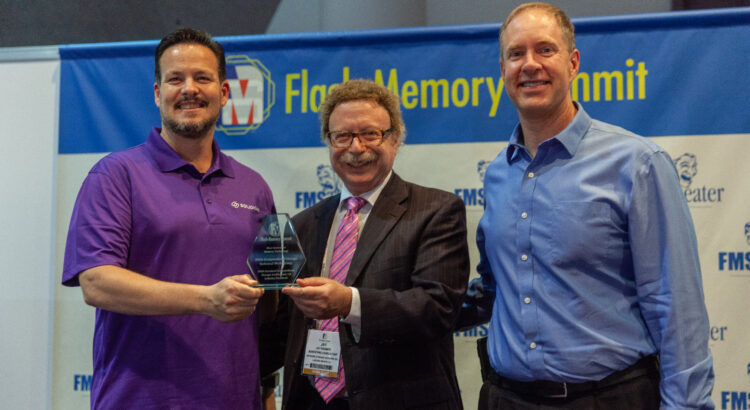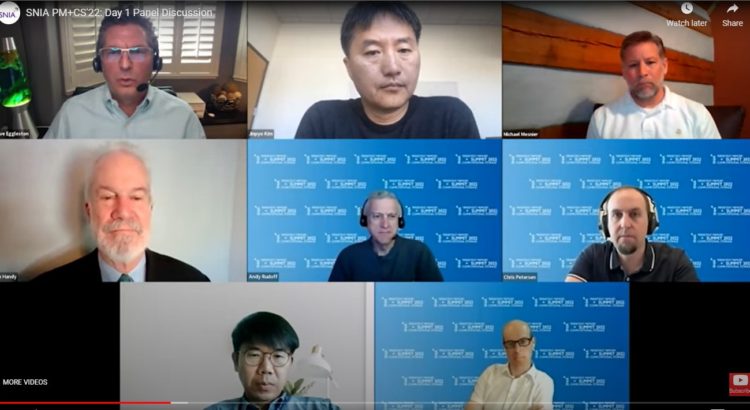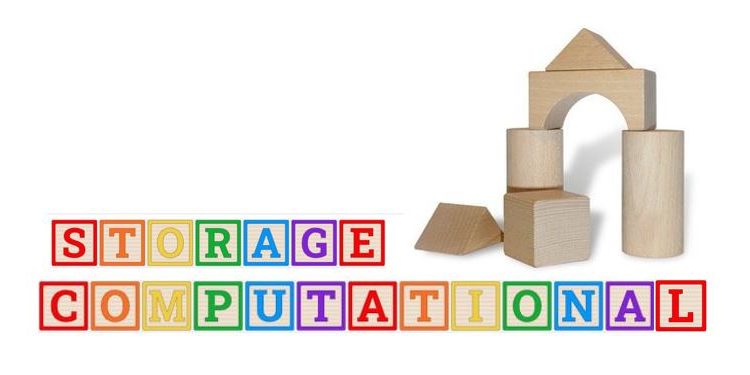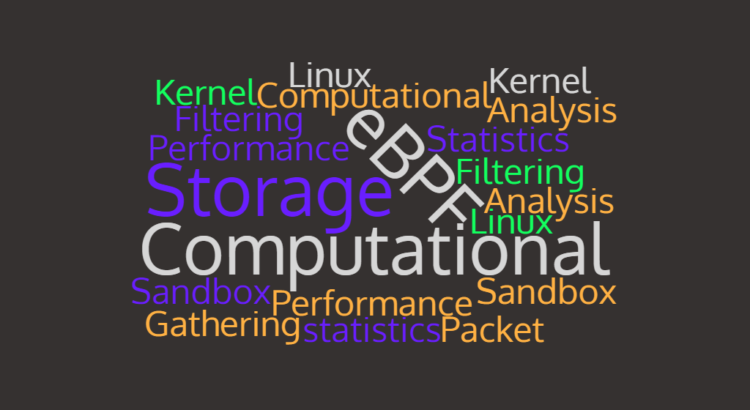Version 1.0 of the SNIA Computational Storage Architecture and Programming Model has just been released to the public at www.snia.org/csarch. The Model has received industry accolades, winning the Flash Memory Summit 2022 Best of Show Award for Most Innovative Memory Technology at their recent conference. Congratulations to all the companies and individuals who contributed large amounts of expertise and time to the creation of this Model.
SNIAOnStorage sat down with SNIA Computational Storage Technical Work Group (CS TWG) co-chairs Jason Molgaard and Scott Shadley; SNIA Computational Storage Architecture and Programming Model editor Bill Martin; and SNIA Computational Storage Special Interest Group chair David McIntyre to get their perspectives on this milestone release and next steps for SNIA.
SNIAOnStorage (SOS): What is the significance of a 1.0 release for this computational storage SNIA specification?
Bill Martin (BM): The 1.0 designation indicates that the SNIA membership has voted to approve the SNIA Computational Storage Architecture and Programming Model as an official SNIA specification. This means that our membership believes that the architecture is something that you can develop computational storage-related products to where multiple vendor products will have similar complimentary architectures and with an industry standardized programming model.
Jason Molgaard (JM): The 1.0 release also indicates a level of maturity where companies can implement computational storage that reflects the elements of the Model. The SNIA CS TWG took products into account when defining the Model’s reference architecture. The Model is for everyone – even those who were not part of the 52 participating companies and 258 member representatives in the TWG – this is concrete, and they can begin development today.
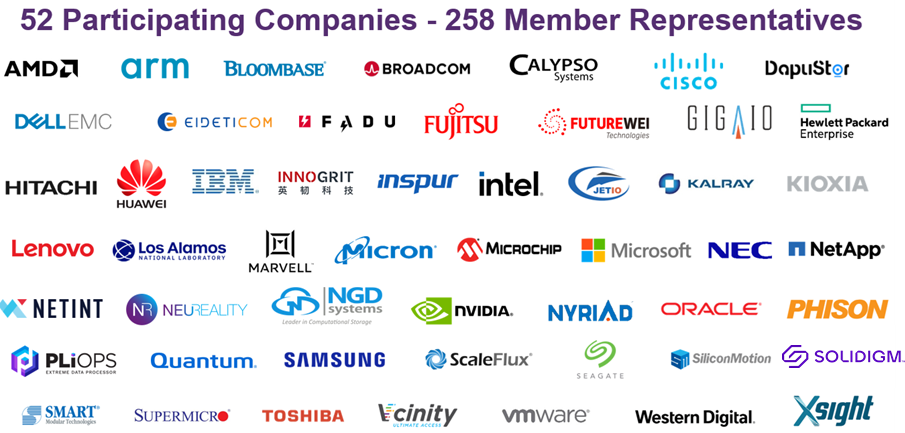
SOS: What do you think is the most important feature of the 1.0 release?
Scott Shadley (SS): Because we have reached the 1.0 release, there is no one specific area that makes one feature more important than anything else. The primary difference from the last release and 1.0 was addressing the Security section. As we know, there are many new security discussions happening and we want to ensure our architecture doesn’t break or even create new security needs. Overall, all aspects are key and relevant.
JM: I agree. The entire Model is applicable to product development and is a comprehensive and inclusive specification. I cannot point to a single section to that is subordinate to other sections in the Model.
David McIntyre (DM): It’s an interesting time for these three domains – compute, storage, and networking – which are beginning to merge and support each other. The 1.0 Model has a nice baseline on definitions – before this there were none, but now we have Computational Storage Devices (CSxes), (Computational Storage Processors (CSPs), Computational Storage Drives (CSDs), and Computational Storage Arrays (CSAs)), and more; and companies can better define what is a CSP and how it connects to associated storage. Definitions help to educate and ground the ecosystems and the engineering community, and how to characterize our vendor solutions into these categories.
BM: I would say that the four most important parts of the 1.0 Model are: 1) it defines terminology that can be used across different protocols; 2) it defines a discovery process flow for those architectures; 3) it defines security considerations for those architectures; and 4) it gives users some examples that can be used for those architectures.
SOS: Who do you see as the audience/user for the Model? What should these constituencies do with the Model?
JM: The Model is useful for both hardware developers who are developing their own computational storage systems, as well as software architects, programmers, and other users to be educated on definitions and the common framework that the architecture describes for computational storage. This will enable everyone to be on the same playing field. The intent is for everyone to have the same level of understanding and to carry on conversations with internal and external developers that are working on related projects. Now they can speak on the same plane. Our wish is for folks to adhere to the model and follow it in their product development.
DM: Having an industry developed reference architecture that hardware and application developers refer to is an important attribute of the 1.0 specification, especially as we get into cloud to edge deployment where standardization has not been as early. Putting compute where data is at the edge – where data is being driven – gives the opportunity to provide normalization and standardization that application developers can refer to contributing computational storage solutions to the edge ecosystem.
SS: Version 1.0 is designed with customers to be used as a full reference document. It is an opportunity to highlight that vendors and solutions providers are doing it in a directed and unified way. Customers with a multi-sourcing strategy see this as something that resonates well to drive involvement with the technology.
SOS: Are there other activities within SNIA going along with the release of the Model?
BM: The CS TWG is actively developing a Computational Storage API that will utilize the Model and provide an application programming interface for which vendors can provide a library that maps to their particular protocol, which would include the NVMe® protocol layer.
JM: The TWG is also collaborating with the SNIA Smart Data Accelerator Interface (SDXI) Technical Work Group on how SDXI and computational storage can potentially be combined in the future.
There is a good opportunity for security to continue to be a focus of discussion in the TWG – examining the threat matrix as the Model evolves to ensure that we are not recreating or disbanding what is out there – and that we use existing solutions.
DM: From a security standpoint the Model and the API go hand in hand as critical components far beyond the device level. It is very important to evolve where we are today from device to solution level capabilities. Having this group of specifications is very important to contribute to the overall ecosystem.
SOS: Are there any industry activities going along with the release of version 1.0 of the Model?
BM: NVM Express® is continuing their development effort on computational storage programs and Subsystems Local Memory that will provide a mechanism to implement the SNIA Architecture and Programming Model.
JM: Compute Express Link™ (CXL™) is a logical progression for computational storage from an interface perspective. As time moves forward, we look for much work to be done in that area.
SS: We know from Flash Memory Summit 2022 that CXL is a next generation transport planned for both storage and memory devices. CXL focuses on memory today and the high-speed transport expected there. CXL is the basically the transport beyond NVMe. One key feature of the SNIA Architecture and Programming Model is to ensure it can apply to CXL, Ethernet, or other transports as it does not dictate the transport layer that is used to talk to the Computational Storage Devices (CSxes).
DM: Standards bodies have been siloed in the past. New opportunities of interfaces and protocols that work together harmoniously will better enable alliances to form. Grouping of standards that work together will better support application requirements from cloud to edge.
SOS: Any final thoughts?
BM: You may ask “Will there be a next generation of the Model?” Yes, we are currently working on the next generation with security enhancements and any other comments we get from public utilization of the Model. Comments can be sent to the SNIA Feedback Portal.
DM: We also welcome input from other industry organizations and their implementations.
BM: For example, if there are implications to the Model from work done by CXL, they could give input and the TWG would work with CXL to integrate necessary enhancements.
JM: CXL could develop new formats specific to Computational Storage. Any new commands could still align with the model since the model is transport agnostic.
SOS: Thanks for your time in discussing the Model. Congratulations on the 1.0 release! And for our readers, check out these links for more information on computational storage:
Computational Storage Playlist on the SNIA Video Channel
